Full text
PDF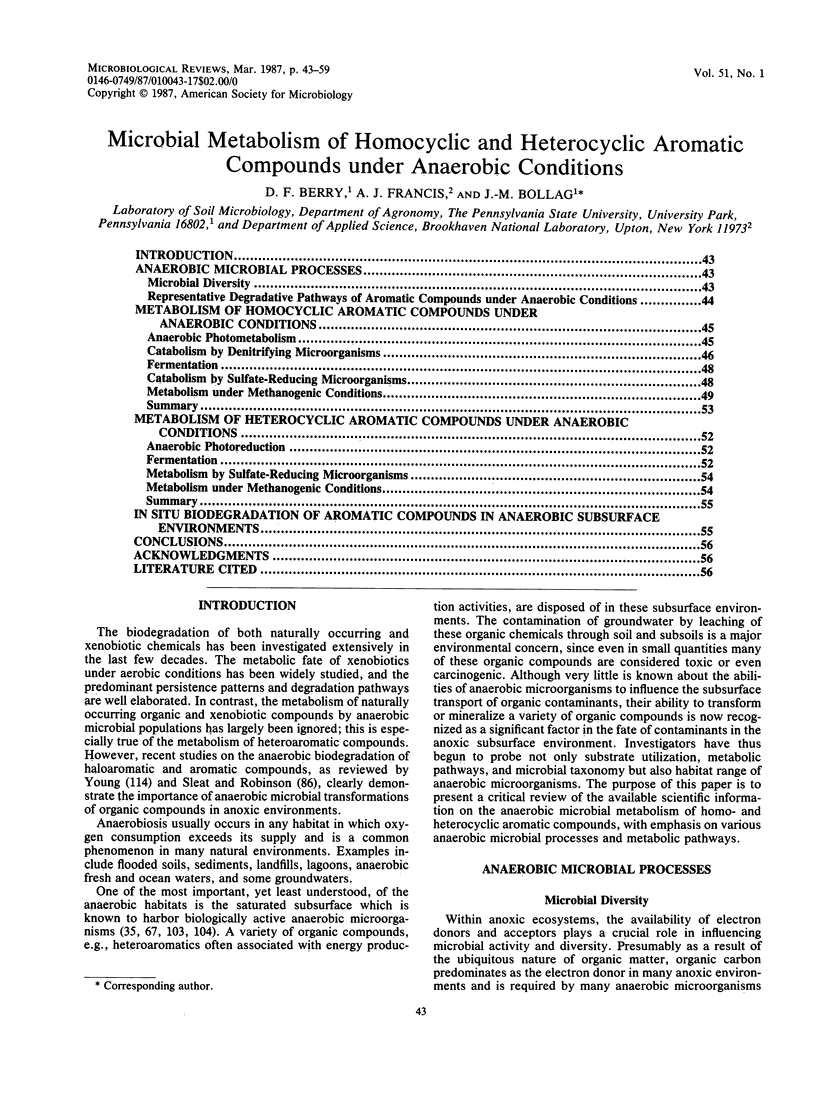
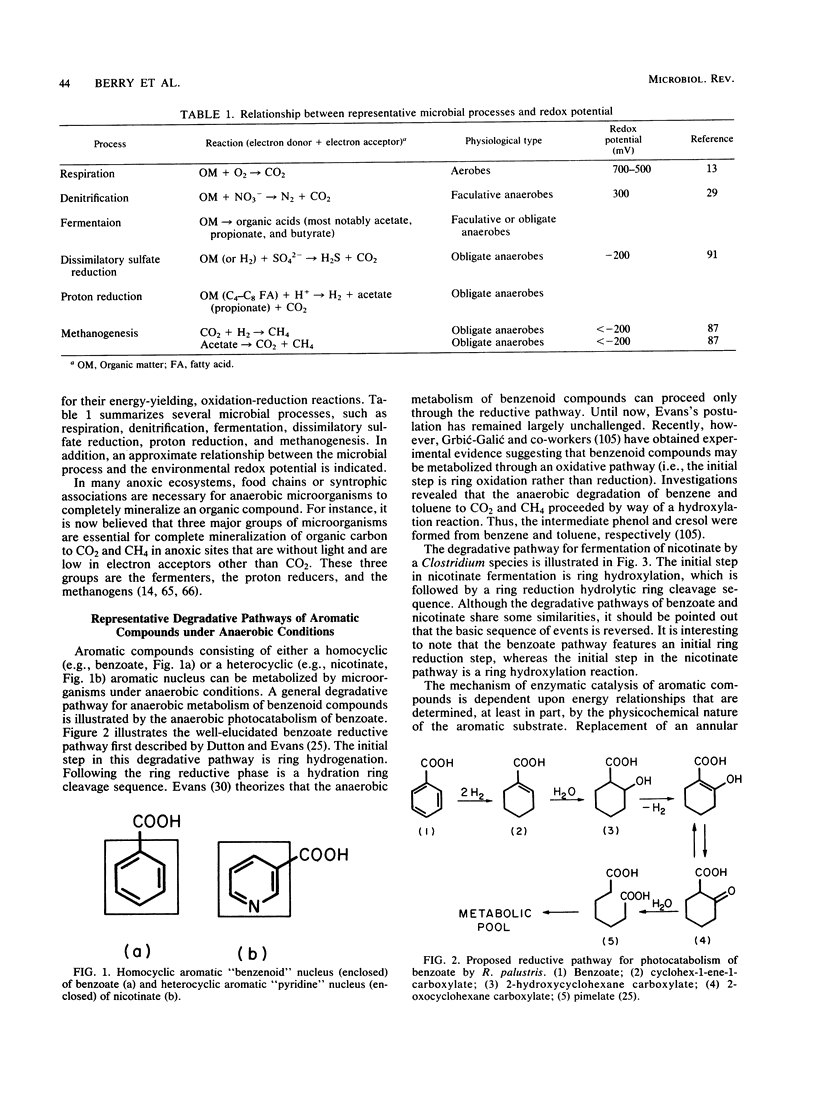
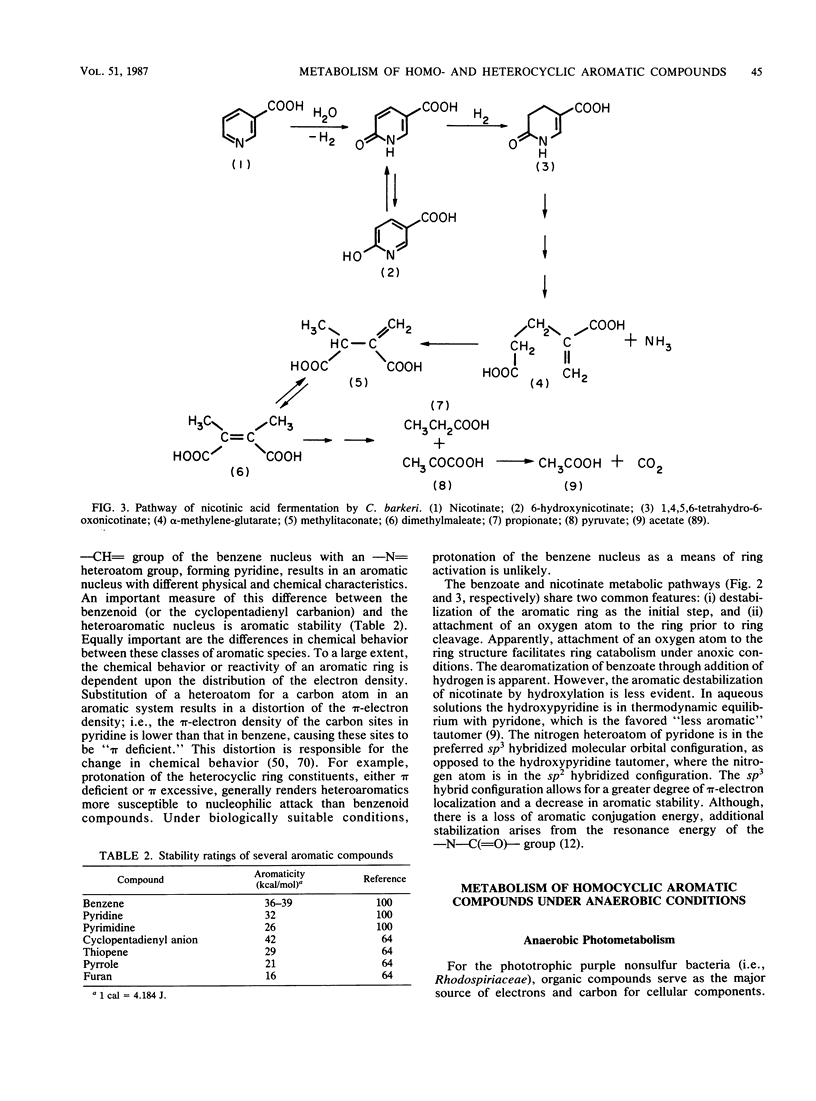
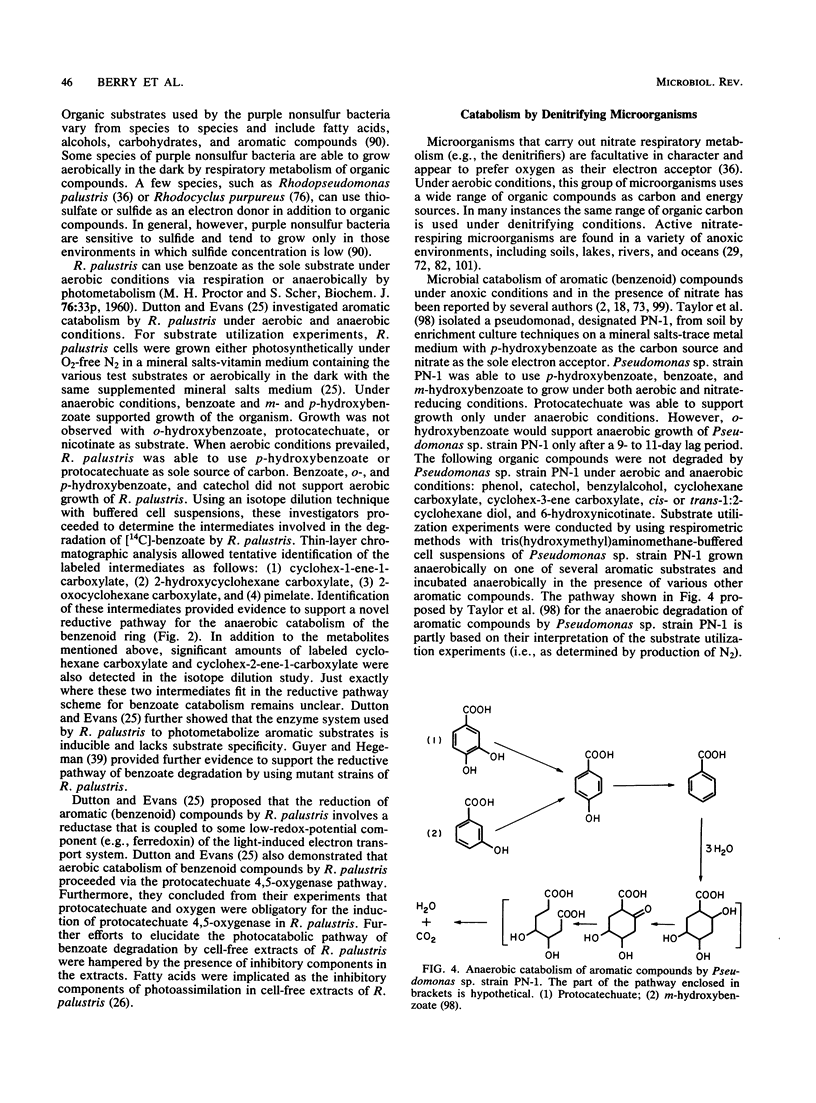
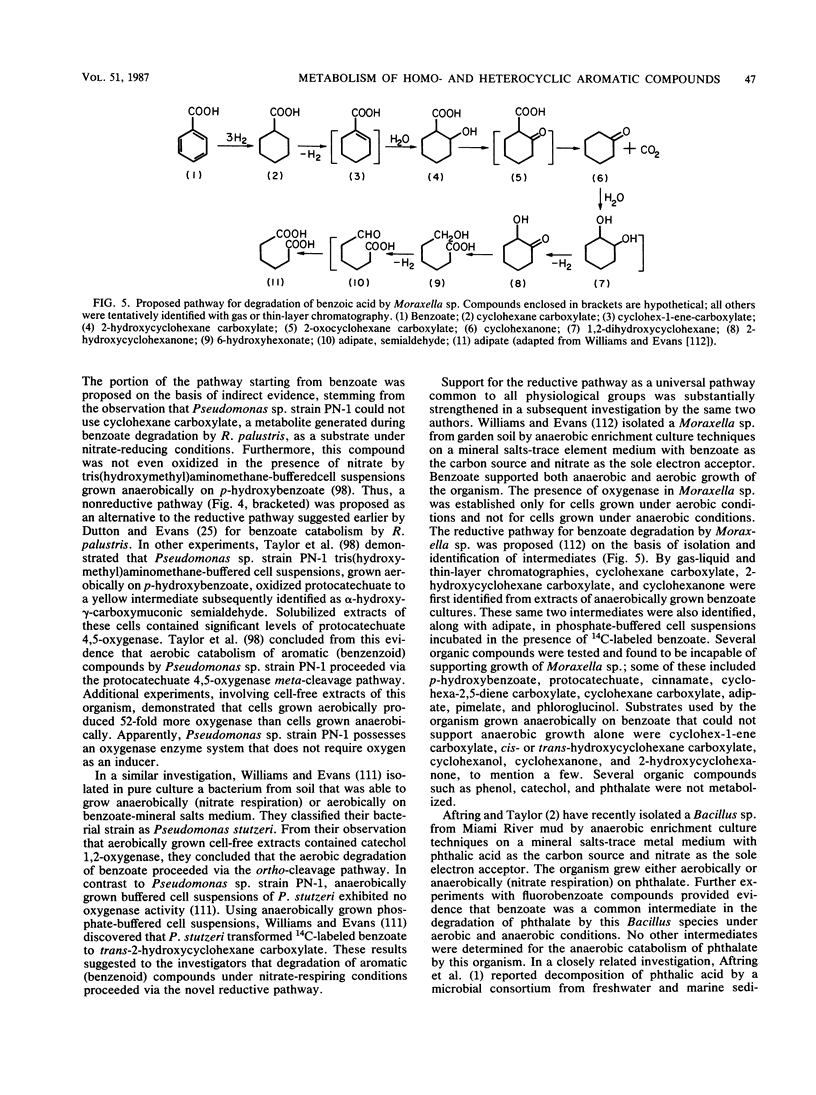
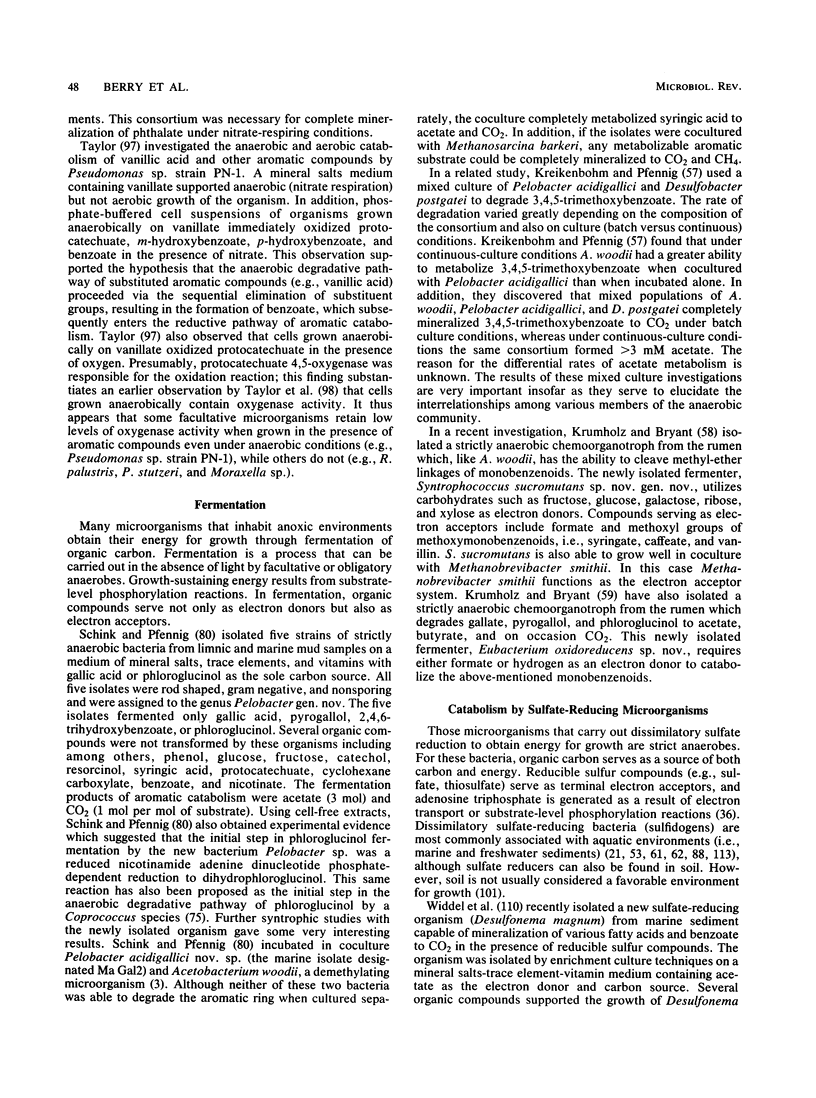
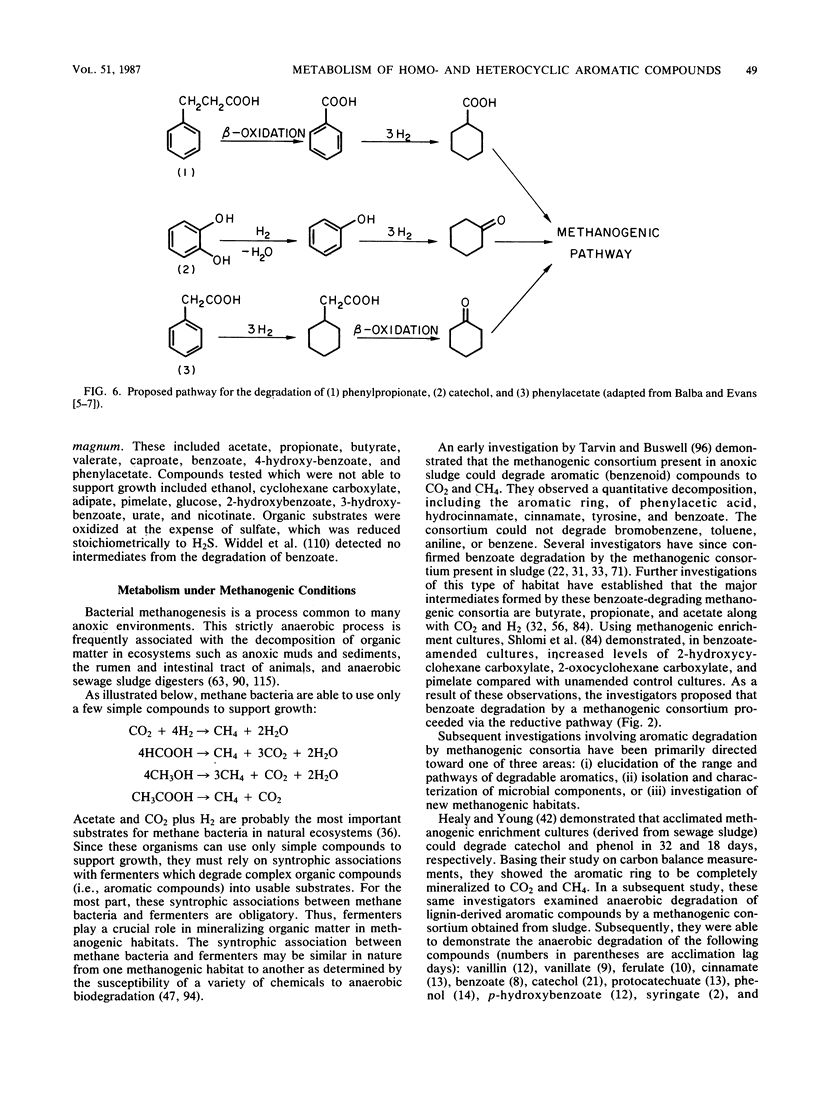
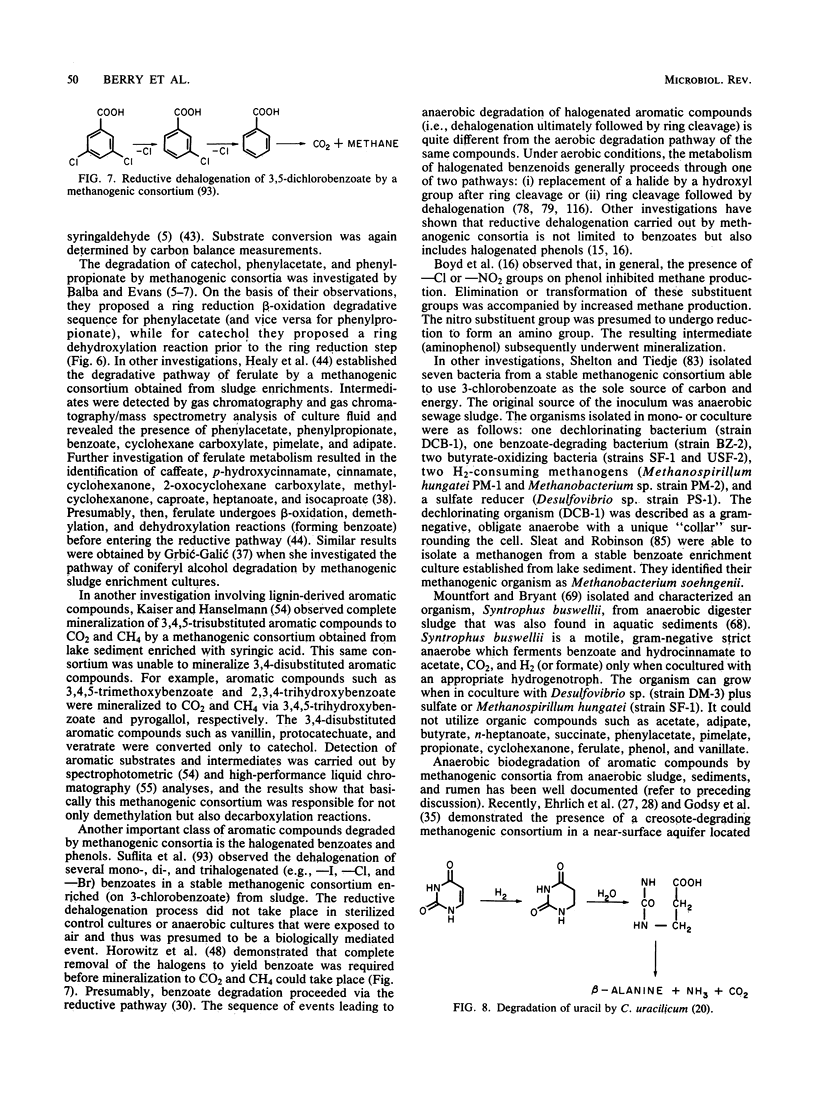
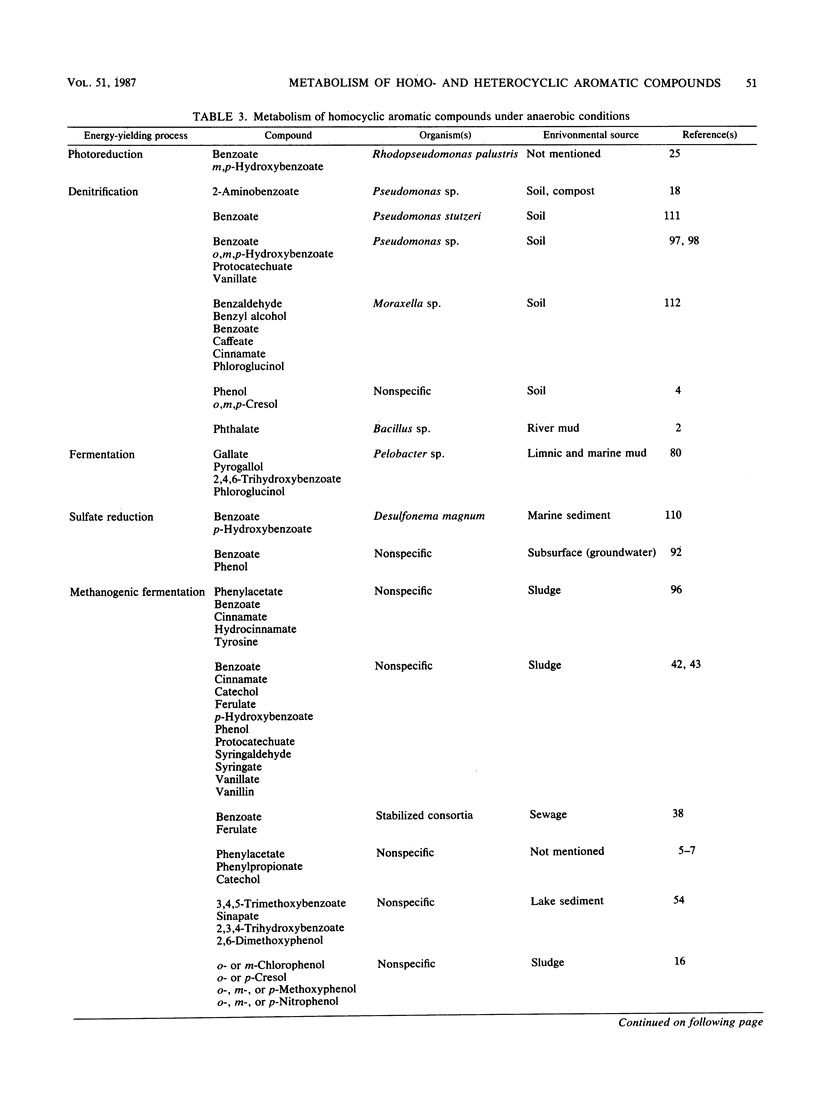
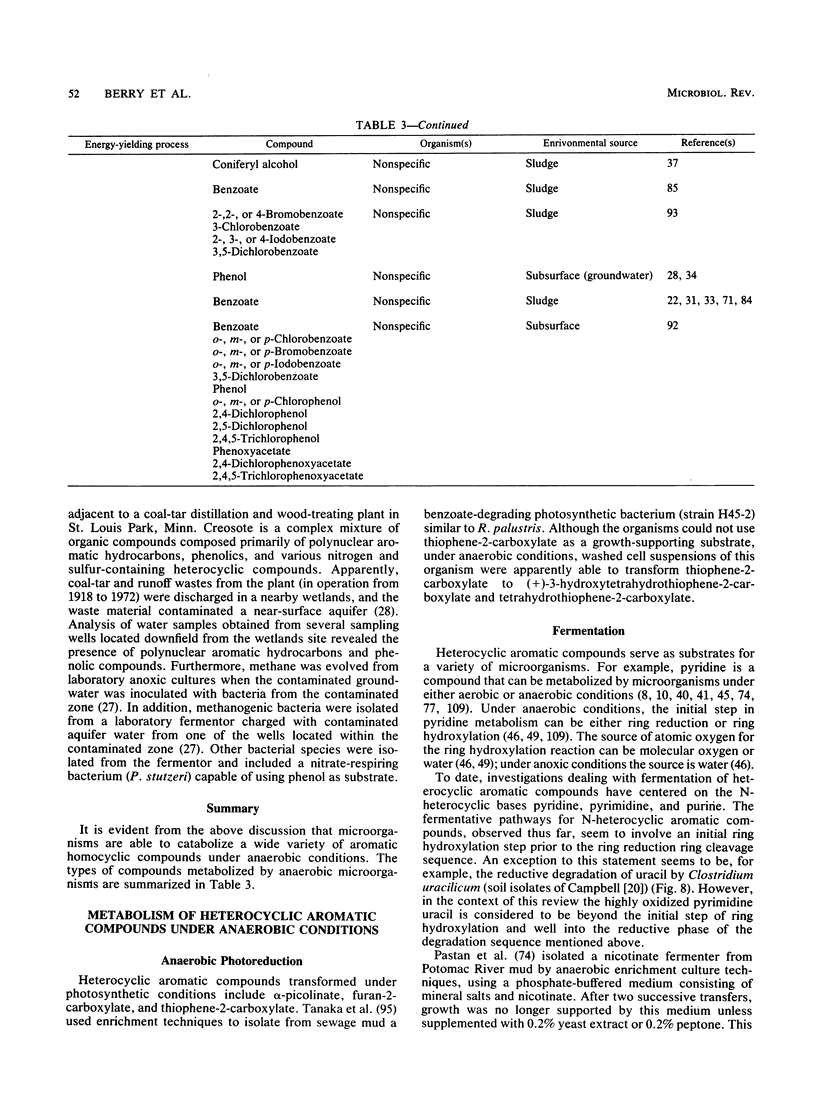
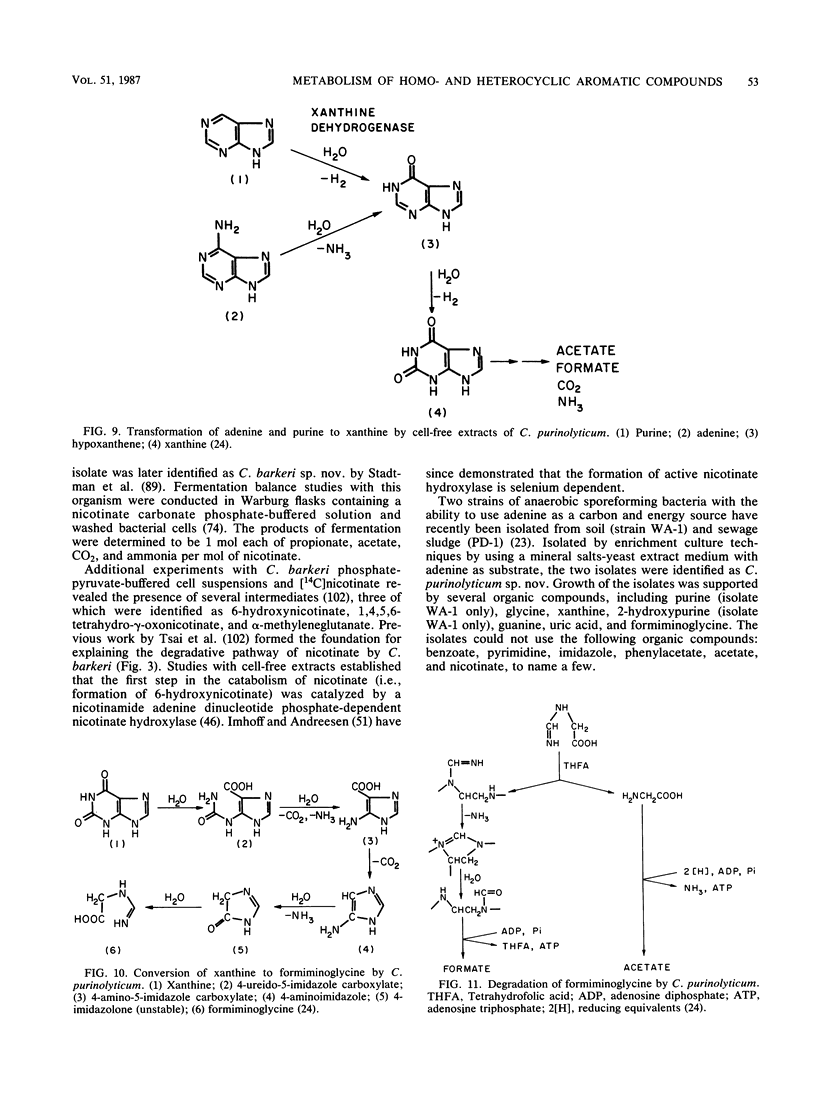
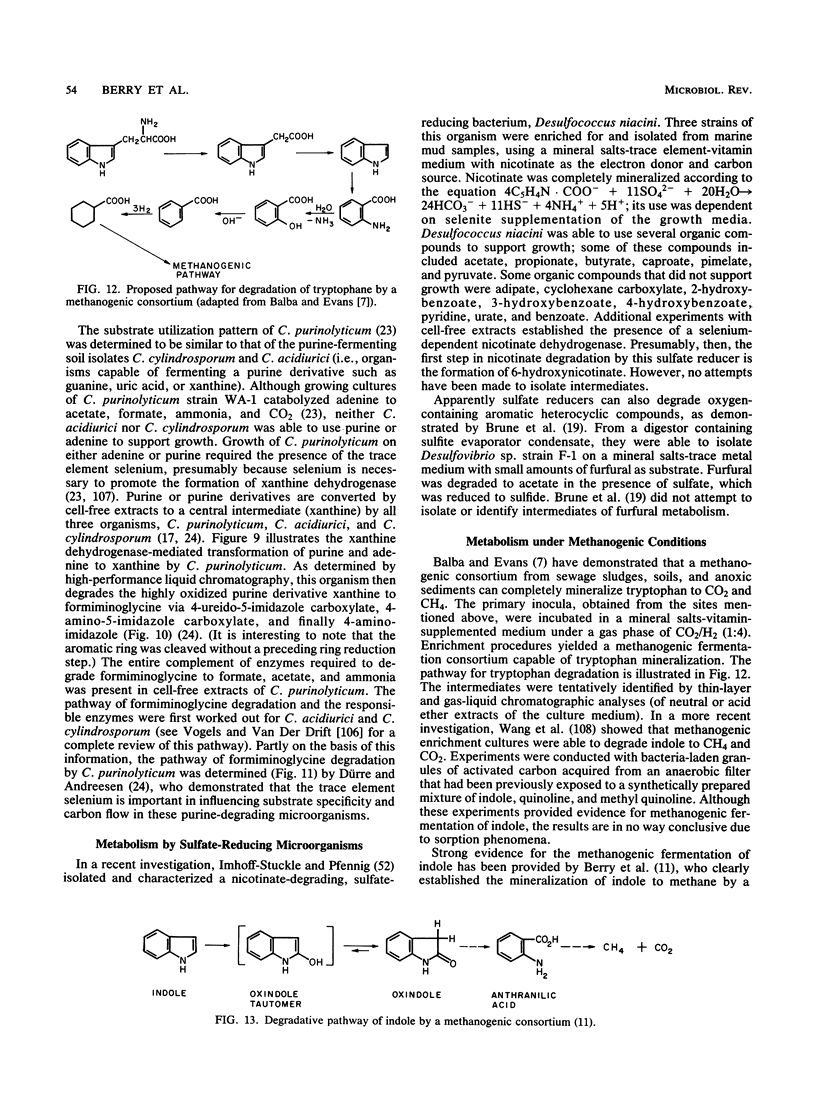
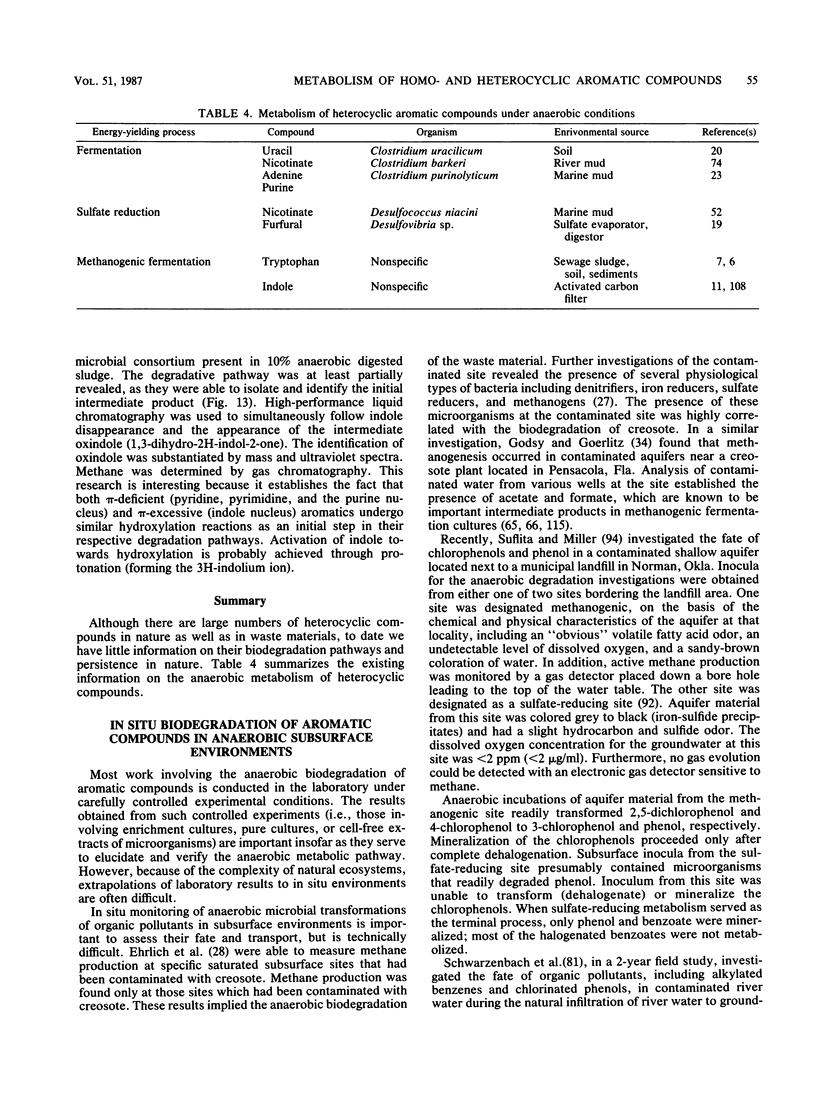
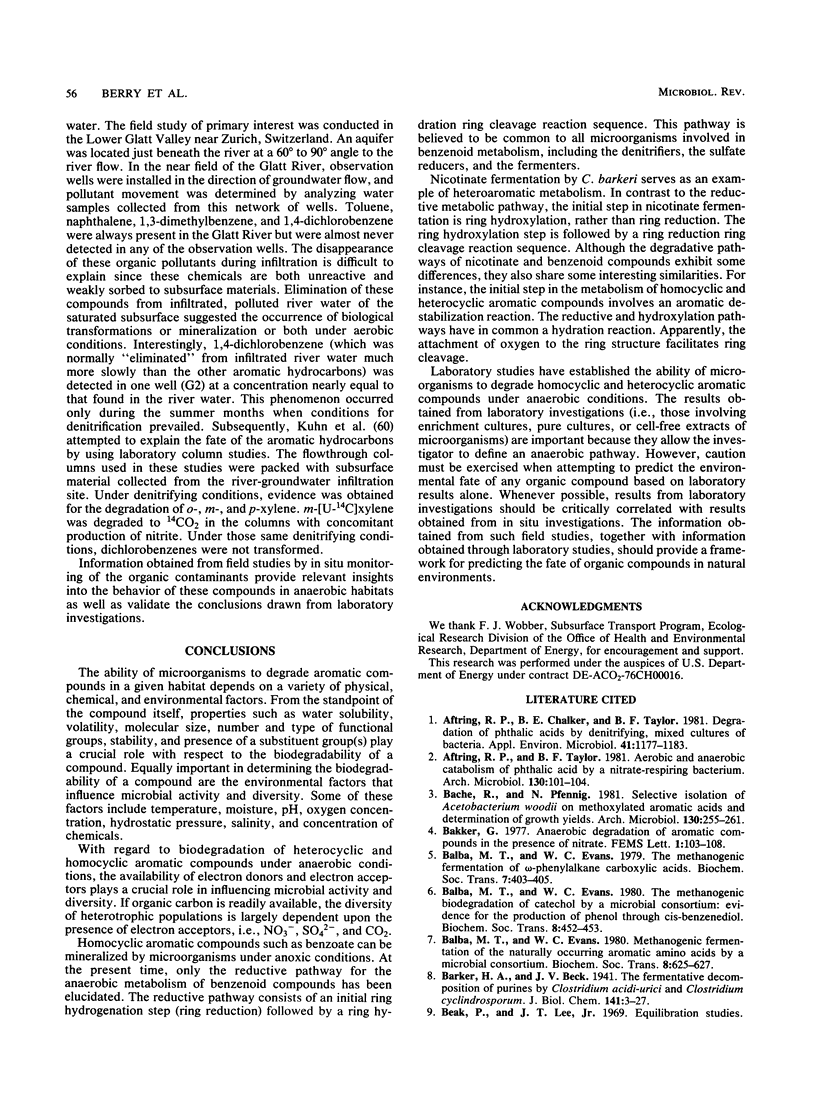
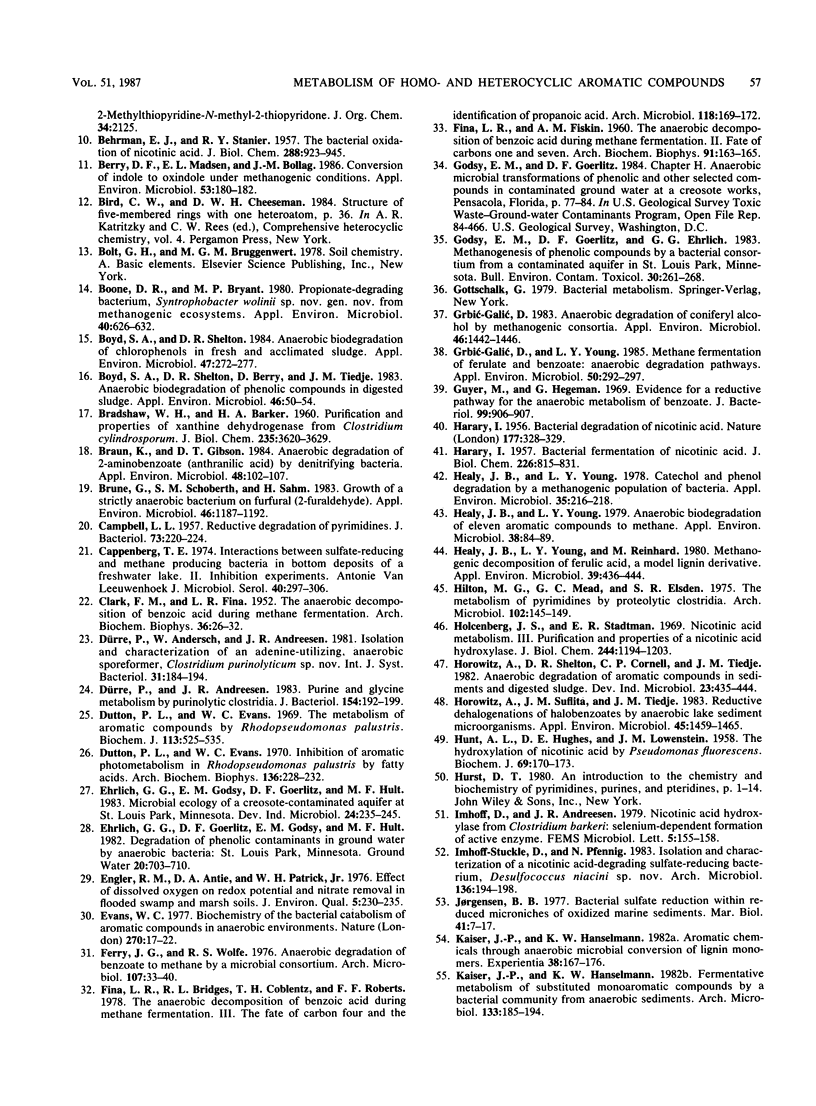
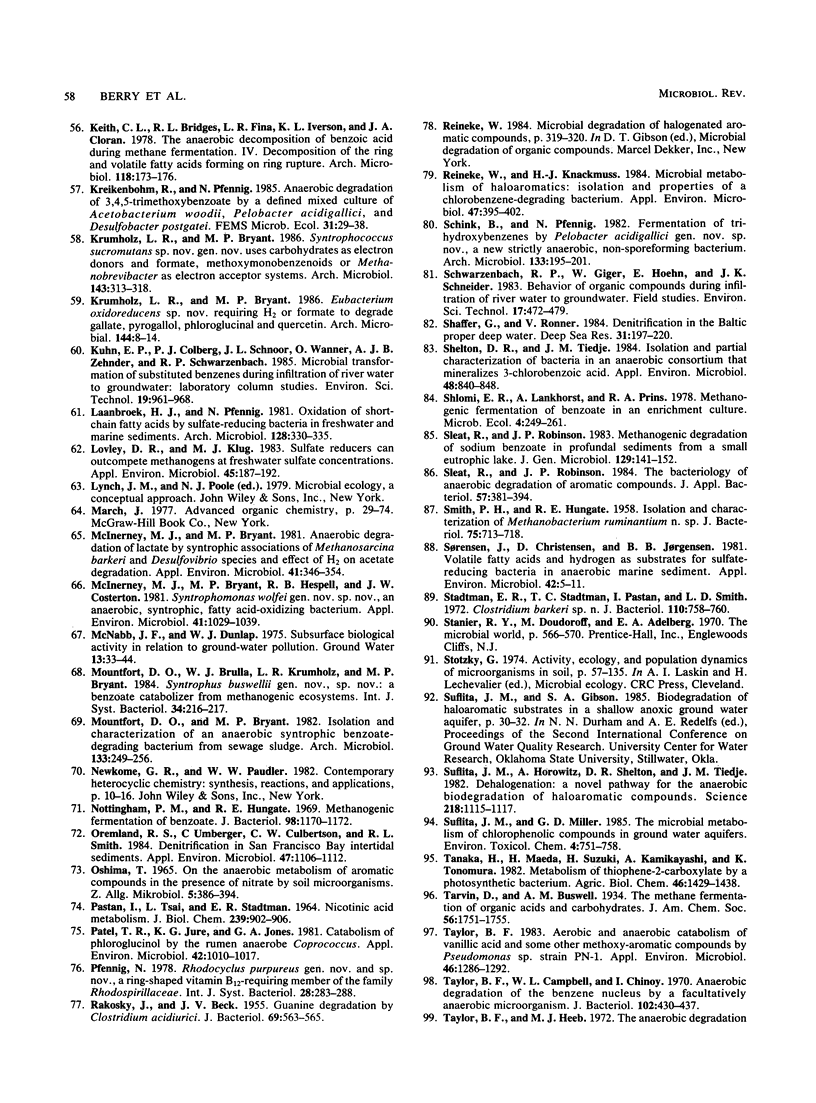
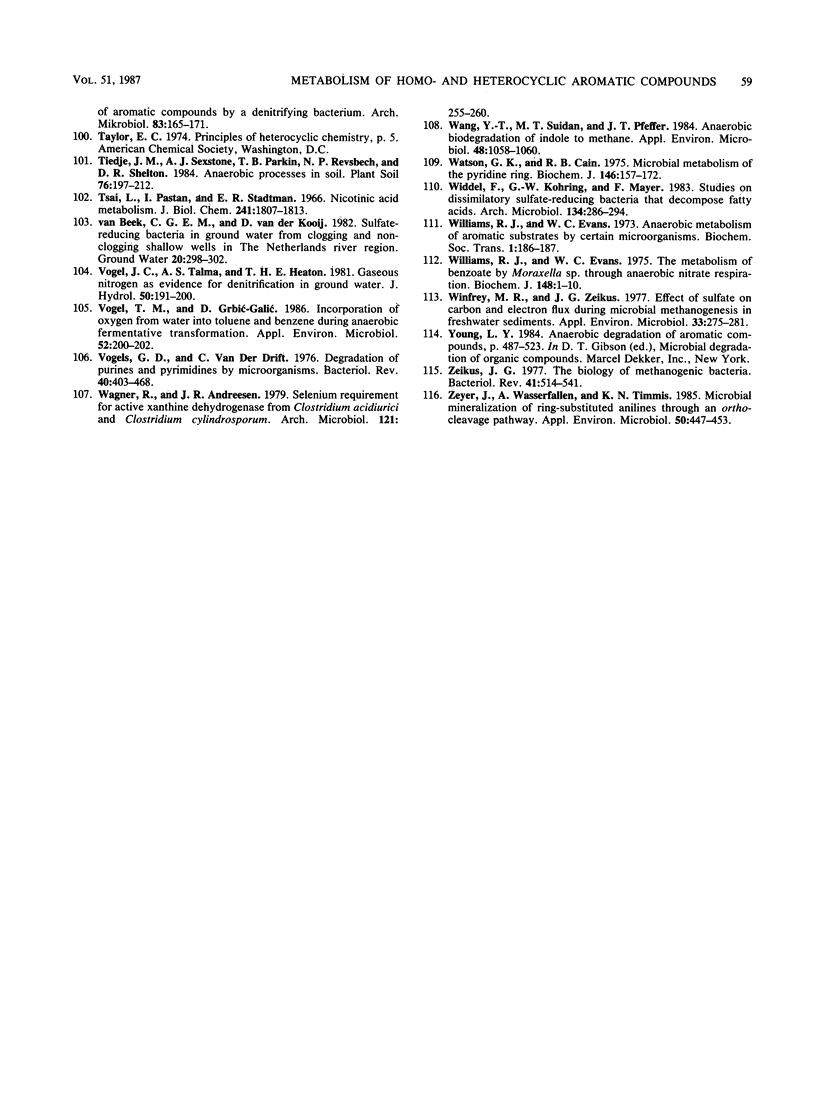
Selected References
These references are in PubMed. This may not be the complete list of references from this article.
- Aftring R. P., Chalker B. E., Taylor B. F. Degradation of phthalic acids by denitrifying, mixed cultures of bacteria. Appl Environ Microbiol. 1981 May;41(5):1177–1183. doi: 10.1128/aem.41.5.1177-1183.1981. [DOI] [PMC free article] [PubMed] [Google Scholar]
- BEHRMAN E. J., STANIER R. Y. The bacterial oxidation of nicotinic acid. J Biol Chem. 1957 Oct;228(2):923–945. [PubMed] [Google Scholar]
- Balba M. T., Evans W. C. Methanogenic fermentation of the naturally occurring aromatic amino acids by a microbial consortium. Biochem Soc Trans. 1980 Oct;8(5):625–627. doi: 10.1042/bst0080625. [DOI] [PubMed] [Google Scholar]
- Balba M. T., Evans W. C. The methanogenic biodegradation of catechol by a microbial consortium: evidence for the production of phenol through cis-benzenediol. Biochem Soc Trans. 1980 Aug;8(4):452–453. doi: 10.1042/bst0080452. [DOI] [PubMed] [Google Scholar]
- Balba M. T., Evans W. C. The methanogenic fermentation of omega-phenylalkane carboxylic acids [proceedings]. Biochem Soc Trans. 1979 Apr;7(2):403–405. doi: 10.1042/bst0070403. [DOI] [PubMed] [Google Scholar]
- Berry D. F., Madsen E. L., Bollag J. M. Conversion of indole to oxindole under methanogenic conditions. Appl Environ Microbiol. 1987 Jan;53(1):180–182. doi: 10.1128/aem.53.1.180-182.1987. [DOI] [PMC free article] [PubMed] [Google Scholar]
- Boone D. R., Bryant M. P. Propionate-Degrading Bacterium, Syntrophobacter wolinii sp. nov. gen. nov., from Methanogenic Ecosystems. Appl Environ Microbiol. 1980 Sep;40(3):626–632. doi: 10.1128/aem.40.3.626-632.1980. [DOI] [PMC free article] [PubMed] [Google Scholar]
- Boyd S. A., Shelton D. R. Anaerobic biodegradation of chlorophenols in fresh and acclimated sludge. Appl Environ Microbiol. 1984 Feb;47(2):272–277. doi: 10.1128/aem.47.2.272-277.1984. [DOI] [PMC free article] [PubMed] [Google Scholar]
- Boyd S. A., Shelton D. R., Berry D., Tiedje J. M. Anaerobic biodegradation of phenolic compounds in digested sludge. Appl Environ Microbiol. 1983 Jul;46(1):50–54. doi: 10.1128/aem.46.1.50-54.1983. [DOI] [PMC free article] [PubMed] [Google Scholar]
- Braun K., Gibson D. T. Anaerobic degradation of 2-aminobenzoate (anthranilic acid) by denitrifying bacteria. Appl Environ Microbiol. 1984 Jul;48(1):102–107. doi: 10.1128/aem.48.1.102-107.1984. [DOI] [PMC free article] [PubMed] [Google Scholar]
- Brune G., Schoberth S. M., Sahm H. Growth of a strictly anaerobic bacterium on furfural (2-furaldehyde). Appl Environ Microbiol. 1983 Nov;46(5):1187–1192. doi: 10.1128/aem.46.5.1187-1192.1983. [DOI] [PMC free article] [PubMed] [Google Scholar]
- CAMPBELL L. L., Jr Reductive degradation of pyrimidines. I. The isolation and characterization of a uracil fermenting bacterium, Clostridium uracilicum nov. spec. J Bacteriol. 1957 Feb;73(2):220–224. doi: 10.1128/jb.73.2.220-224.1957. [DOI] [PMC free article] [PubMed] [Google Scholar]
- CLARK F. M., FINA L. R. The anaerobic decomposition of benzoic acid during methane fermentation. Arch Biochem Biophys. 1952 Mar;36(1):26–32. doi: 10.1016/0003-9861(52)90374-3. [DOI] [PubMed] [Google Scholar]
- Cappenberg T. E. Interrelations between sulfate-reducing and methane-producing bacteria in bottom deposits of a fresh-water lake. II. Inhibition experiments. Antonie Van Leeuwenhoek. 1974;40(2):297–306. doi: 10.1007/BF00394388. [DOI] [PubMed] [Google Scholar]
- Dutton P. L., Evans W. C. Inhibition of aromatic photometabolism in Rhodopseudomonas palustris by fatty acids. Arch Biochem Biophys. 1970 Jan;136(1):228–232. doi: 10.1016/0003-9861(70)90346-2. [DOI] [PubMed] [Google Scholar]
- Dutton P. L., Evans W. C. The metabolism of aromatic compounds by Rhodopseudomonas palustris. A new, reductive, method of aromatic ring metabolism. Biochem J. 1969 Jul;113(3):525–536. doi: 10.1042/bj1130525. [DOI] [PMC free article] [PubMed] [Google Scholar]
- Dürre P., Andreesen J. R. Purine and glycine metabolism by purinolytic clostridia. J Bacteriol. 1983 Apr;154(1):192–199. doi: 10.1128/jb.154.1.192-199.1983. [DOI] [PMC free article] [PubMed] [Google Scholar]
- Evans W. C. Biochemistry of the bacterial catabolism of aromatic compounds in anaerobic environments. Nature. 1977 Nov 3;270(5632):17–22. doi: 10.1038/270017a0. [DOI] [PubMed] [Google Scholar]
- FINA L. R., FISKIN A. M. The anaerobic decomposition of benzoic acid during methane fermentation. II. Fate of carbons one and seven. Arch Biochem Biophys. 1960 Dec;91:163–165. doi: 10.1016/0003-9861(60)90483-5. [DOI] [PubMed] [Google Scholar]
- Ferry J. G., Wolfe R. S. Anaerobic degradation of benzoate to methane by a microbial consortium. Arch Microbiol. 1976 Feb;107(1):33–40. doi: 10.1007/BF00427864. [DOI] [PubMed] [Google Scholar]
- Fina L. R., Bridges R. L., Coblentz T. H., Roberts F. F. The anaerobic decomposition of benzoic acid during methane fermentation. III. The fate of carbon four and the identification of propanoic acid. Arch Microbiol. 1978 Aug 1;118(2):169–172. doi: 10.1007/BF00415725. [DOI] [PubMed] [Google Scholar]
- Godsy E. M., Goerlitz D. F., Ehrlich G. G. Methanogenesis of phenolic compounds by a bacterial consortium from a contaminated aquifier in St. Louis Park, Minnesota. Bull Environ Contam Toxicol. 1983 Mar;30(3):261–268. doi: 10.1007/BF01610131. [DOI] [PubMed] [Google Scholar]
- Grbić-Galić D., Young L. Y. Methane fermentation of ferulate and benzoate: anaerobic degradation pathways. Appl Environ Microbiol. 1985 Aug;50(2):292–297. doi: 10.1128/aem.50.2.292-297.1985. [DOI] [PMC free article] [PubMed] [Google Scholar]
- Guyer M., Hegeman G. Evidence for a reductive pathway for the anaerobic metabolism of benzoate. J Bacteriol. 1969 Sep;99(3):906–907. doi: 10.1128/jb.99.3.906-907.1969. [DOI] [PMC free article] [PubMed] [Google Scholar]
- HARARY I. Bacterial degradation of nicotinic acid. Nature. 1956 Feb 18;177(4503):328–329. doi: 10.1038/177328a0. [DOI] [PubMed] [Google Scholar]
- HARARY I. Bacterial fermentation of nicotinic acid. I. End products. J Biol Chem. 1957 Aug;227(2):815–822. [PubMed] [Google Scholar]
- HUNT A. L., HUGHES D. E., LOWENSTEIN J. M. The hydroxylation of nicotinic acid by Pseudomonas fluorescens. Biochem J. 1958 Jun;69(2):170–173. doi: 10.1042/bj0690170. [DOI] [PMC free article] [PubMed] [Google Scholar]
- Healy J. B., Jr, Young L. Y. Catechol and phenol degradation by a methanogenic population of bacteria. Appl Environ Microbiol. 1978 Jan;35(1):216–218. doi: 10.1128/aem.35.1.216-218.1978. [DOI] [PMC free article] [PubMed] [Google Scholar]
- Healy J. B., Young L. Y. Anaerobic biodegradation of eleven aromatic compounds to methane. Appl Environ Microbiol. 1979 Jul;38(1):84–89. doi: 10.1128/aem.38.1.84-89.1979. [DOI] [PMC free article] [PubMed] [Google Scholar]
- Healy J. B., Young L. Y., Reinhard M. Methanogenic decomposition of ferulic Acid, a model lignin derivative. Appl Environ Microbiol. 1980 Feb;39(2):436–444. doi: 10.1128/aem.39.2.436-444.1980. [DOI] [PMC free article] [PubMed] [Google Scholar]
- Hilton M. G. The metabolism of pyrimidines by proteolytic clostridia. Arch Microbiol. 1975;102(2):145–149. doi: 10.1007/BF00428359. [DOI] [PubMed] [Google Scholar]
- Holcenberg J. S., Stadtman E. R. Nicotinic acid metabolism. 3. Purification and properties of a nicotinic acid hydroxylase. J Biol Chem. 1969 Mar 10;244(5):1194–1203. [PubMed] [Google Scholar]
- Horowitz A., Suflita J. M., Tiedje J. M. Reductive dehalogenations of halobenzoates by anaerobic lake sediment microorganisms. Appl Environ Microbiol. 1983 May;45(5):1459–1465. doi: 10.1128/aem.45.5.1459-1465.1983. [DOI] [PMC free article] [PubMed] [Google Scholar]
- Keith C. L., Bridges R. L., Fina L. R., Iverson K. L., Cloran J. A. The anaerobic decomposition of benzoic acid during methane fermentation. IV. Dearomatization of the ring and volatile fatty acids formed on ring rupture. Arch Microbiol. 1978 Aug 1;118(2):173–176. doi: 10.1007/BF00415726. [DOI] [PubMed] [Google Scholar]
- Laanbroek H. J., Pfennig N. Oxidation of short-chain fatty acids by sulfate-reducing bacteria in freshwater and in marine sediments. Arch Microbiol. 1981 Jan;128(3):330–335. doi: 10.1007/BF00422540. [DOI] [PubMed] [Google Scholar]
- Lovley D. R., Klug M. J. Sulfate reducers can outcompete methanogens at freshwater sulfate concentrations. Appl Environ Microbiol. 1983 Jan;45(1):187–192. doi: 10.1128/aem.45.1.187-192.1983. [DOI] [PMC free article] [PubMed] [Google Scholar]
- McInerney M. J., Bryant M. P. Anaerobic Degradation of Lactate by Syntrophic Associations of Methanosarcina barkeri and Desulfovibrio Species and Effect of H(2) on Acetate Degradation. Appl Environ Microbiol. 1981 Feb;41(2):346–354. doi: 10.1128/aem.41.2.346-354.1981. [DOI] [PMC free article] [PubMed] [Google Scholar]
- McInerney M. J., Bryant M. P., Hespell R. B., Costerton J. W. Syntrophomonas wolfei gen. nov. sp. nov., an Anaerobic, Syntrophic, Fatty Acid-Oxidizing Bacterium. Appl Environ Microbiol. 1981 Apr;41(4):1029–1039. doi: 10.1128/aem.41.4.1029-1039.1981. [DOI] [PMC free article] [PubMed] [Google Scholar]
- Nottingham P. M., Hungate R. E. Methanogenic fermentation of benzoate. J Bacteriol. 1969 Jun;98(3):1170–1172. doi: 10.1128/jb.98.3.1170-1172.1969. [DOI] [PMC free article] [PubMed] [Google Scholar]
- Oremland R. S., Umberger C., Culbertson C. W., Smith R. L. Denitrification in san francisco bay intertidal sediments. Appl Environ Microbiol. 1984 May;47(5):1106–1112. doi: 10.1128/aem.47.5.1106-1112.1984. [DOI] [PMC free article] [PubMed] [Google Scholar]
- PASTAN I., TSAI L., STADTMAN E. R. NICOTINIC ACID METABOLISM. I. DISTRIBUTION OF ISOTOPE IN FERMENTATION PRODUCTS OF LABELLED NICOTINIC ACID. J Biol Chem. 1964 Mar;239:902–906. [PubMed] [Google Scholar]
- Patel T. R., Jure K. G., Jones G. A. Catabolism of phloroglucinol by the rumen anaerobe coprococcus. Appl Environ Microbiol. 1981 Dec;42(6):1010–1017. doi: 10.1128/aem.42.6.1010-1017.1981. [DOI] [PMC free article] [PubMed] [Google Scholar]
- RAKOSKY J., Jr, BECK J. V. Guanine degradation by Clostridium acidiurici. I. Evidence for the presence of guanase. J Bacteriol. 1955 May;69(5):563–565. doi: 10.1128/jb.69.5.563-565.1955. [DOI] [PMC free article] [PubMed] [Google Scholar]
- Reineke W., Knackmuss H. J. Microbial metabolism of haloaromatics: isolation and properties of a chlorobenzene-degrading bacterium. Appl Environ Microbiol. 1984 Feb;47(2):395–402. doi: 10.1128/aem.47.2.395-402.1984. [DOI] [PMC free article] [PubMed] [Google Scholar]
- SMITH P. H., HUNGATE R. E. Isolation and characterization of Methanobacterium ruminantium n. sp. J Bacteriol. 1958 Jun;75(6):713–718. doi: 10.1128/jb.75.6.713-718.1958. [DOI] [PMC free article] [PubMed] [Google Scholar]
- Shelton D. R., Tiedje J. M. Isolation and partial characterization of bacteria in an anaerobic consortium that mineralizes 3-chlorobenzoic Acid. Appl Environ Microbiol. 1984 Oct;48(4):840–848. doi: 10.1128/aem.48.4.840-848.1984. [DOI] [PMC free article] [PubMed] [Google Scholar]
- Sleat R., Robinson J. P. The bacteriology of anaerobic degradation of aromatic compounds. J Appl Bacteriol. 1984 Dec;57(3):381–394. doi: 10.1111/j.1365-2672.1984.tb01404.x. [DOI] [PubMed] [Google Scholar]
- Stadtman E. R., Stadtman T. C., Pastan I., Smith L. D. Clostridium barkeri sp. n. J Bacteriol. 1972 May;110(2):758–760. doi: 10.1128/jb.110.2.758-760.1972. [DOI] [PMC free article] [PubMed] [Google Scholar]
- Suflita J. M., Horowitz A., Shelton D. R., Tiedje J. M. Dehalogenation: a novel pathway for the anaerobic biodegradation of haloaromatic compounds. Science. 1982 Dec 10;218(4577):1115–1117. doi: 10.1126/science.218.4577.1115. [DOI] [PubMed] [Google Scholar]
- Sørensen J., Christensen D., Jørgensen B. B. Volatile Fatty acids and hydrogen as substrates for sulfate-reducing bacteria in anaerobic marine sediment. Appl Environ Microbiol. 1981 Jul;42(1):5–11. doi: 10.1128/aem.42.1.5-11.1981. [DOI] [PMC free article] [PubMed] [Google Scholar]
- Taylor B. F. Aerobic and Anaerobic Catabolism of Vanillic Acid and Some Other Methoxy-Aromatic Compounds by Pseudomonas sp. Strain PN-1. Appl Environ Microbiol. 1983 Dec;46(6):1286–1292. doi: 10.1128/aem.46.6.1286-1292.1983. [DOI] [PMC free article] [PubMed] [Google Scholar]
- Taylor B. F., Campbell W. L., Chinoy I. Anaerobic degradation of the benzene nucleus by a facultatively anaerobic microorganism. J Bacteriol. 1970 May;102(2):430–437. doi: 10.1128/jb.102.2.430-437.1970. [DOI] [PMC free article] [PubMed] [Google Scholar]
- Taylor B. F., Heeb M. J. The anaerobic degradation of aromatic compounds by a denitrifying bacterium. Radioisotope and mutant studies. Arch Mikrobiol. 1972;83(2):165–171. doi: 10.1007/BF00425023. [DOI] [PubMed] [Google Scholar]
- Tsai L., Pastan I., Stadtman E. R. Nicotinic acid metabolism. II. The isolation and characterization of intermediates in the fermentation of nicotinic acid. J Biol Chem. 1966 Apr 25;241(8):1807–1813. [PubMed] [Google Scholar]
- Vogel T. M., Grbìc-Galìc D. Incorporation of Oxygen from Water into Toluene and Benzene during Anaerobic Fermentative Transformation. Appl Environ Microbiol. 1986 Jul;52(1):200–202. doi: 10.1128/aem.52.1.200-202.1986. [DOI] [PMC free article] [PubMed] [Google Scholar]
- Vogels G. D., Van der Drift C. Degradation of purines and pyrimidines by microorganisms. Bacteriol Rev. 1976 Jun;40(2):403–468. doi: 10.1128/br.40.2.403-468.1976. [DOI] [PMC free article] [PubMed] [Google Scholar]
- Wagner R., Andreesen J. R. Selenium requirement for active xanthine dehydrogenase from Clostridium acidiurici and Clostridium cylindrosporum. Arch Microbiol. 1979 Jun;121(3):255–260. doi: 10.1007/BF00425064. [DOI] [PubMed] [Google Scholar]
- Wang Y. T., Suidan M. T., Pfeffer J. T. Anaerobic biodegradation of indole to methane. Appl Environ Microbiol. 1984 Nov;48(5):1058–1060. doi: 10.1128/aem.48.5.1058-1060.1984. [DOI] [PMC free article] [PubMed] [Google Scholar]
- Watson G. K., Cain R. B. Microbial metabolism of the pyridine ring. Metabolic pathways of pyridine biodegradation by soil bacteria. Biochem J. 1975 Jan;146(1):157–172. doi: 10.1042/bj1460157. [DOI] [PMC free article] [PubMed] [Google Scholar]
- Williams R. J., Evans W. C. The metabolism of benzoate by Moraxella species through anaerobic nitrate respiration. Evidence for a reductive pathway. Biochem J. 1975 Apr;148(1):1–10. doi: 10.1042/bj1480001a. [DOI] [PMC free article] [PubMed] [Google Scholar]
- Winfrey M. R., Zeikus J. G. Effect of sulfate on carbon and electron flow during microbial methanogenesis in freshwater sediments. Appl Environ Microbiol. 1977 Feb;33(2):275–281. doi: 10.1128/aem.33.2.275-281.1977. [DOI] [PMC free article] [PubMed] [Google Scholar]
- Zeikus J. G. The biology of methanogenic bacteria. Bacteriol Rev. 1977 Jun;41(2):514–541. doi: 10.1128/br.41.2.514-541.1977. [DOI] [PMC free article] [PubMed] [Google Scholar]
- Zeyer J., Wasserfallen A., Timmis K. N. Microbial mineralization of ring-substituted anilines through an ortho-cleavage pathway. Appl Environ Microbiol. 1985 Aug;50(2):447–453. doi: 10.1128/aem.50.2.447-453.1985. [DOI] [PMC free article] [PubMed] [Google Scholar]


